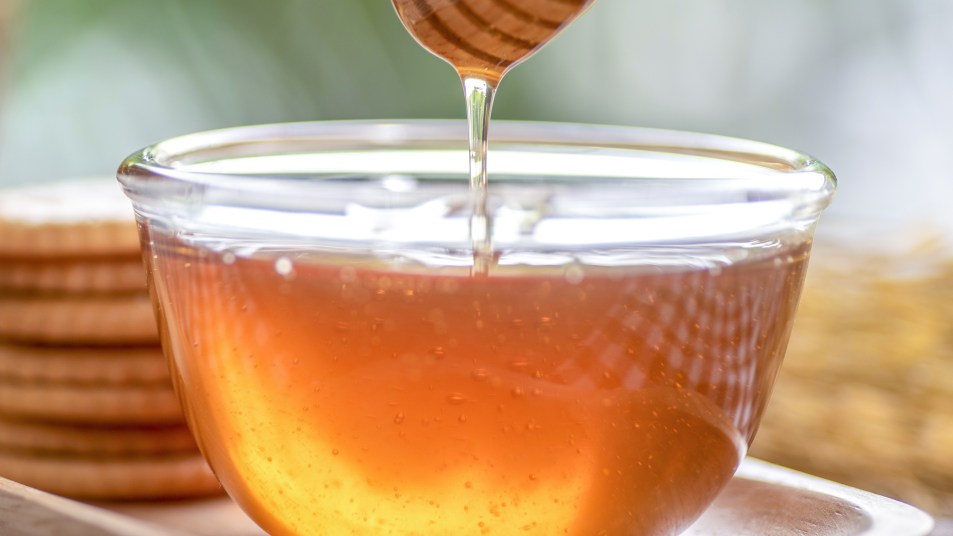Does Honey Go Bad? It Could in the Wrong Conditions

Honey is typically something that sits on our shelves for a while. Most of us don’t use a lot of it, but it’s convenient to have on hand when you want to add a little sweetness to a cup of tea or a baked treat. However, many people think that you can keep honey indefinitely, but this isn’t exactly the case.
Contrary to popular belief, honey can go bad — just not as easily as other foods. Eating bad honey is dangerous because it can contain substances that harm your health and make you sick, like mold and other fungi and bacteria.
It can vary, but in general, honey is made up of about 80 percent sugar and no more than 18 percent water. Moisture typically gives way to harmful microbes like mold that could grow and cause food to go bad. Since honey is low in water or moisture, it tends to last longer on the shelf. On top of that, honey has a high osmotic pressure, a force that pushes water out of those harmful microbes, causing them to die instead of multiply.
Honey is slightly acidic thanks to its gluconic acid content, and this also prevents microbes from growing and spoiling it. What’s perhaps most impressive, though, is that bees preserve their honey naturally! When making honey, bees secrete an enzyme called glucose oxidase which helps convert the sugar into hydrogen peroxide as the honey ripens. Hydrogen peroxide is said to be responsible for honey’s antibacterial and antimicrobial properties!
While honey certainly has some powerful forces working to keep it fresh, it must be stored in certain conditions to make sure it doesn’t turn rancid and harmful for your health. Honey can easily be contaminated, and improper storage can cause it to go bad.
As mentioned, different types of microbes occur naturally when honey is produced, however, sometimes they are also added during human processing. Since honey is time-consuming and difficult to produce, companies will put often put additives in that can compromise its shelf life. During processing, bees can be fed with corn syrup or cane sugar, and other syrups are often added to honey during the final processing stages. Honey is sometimes harvested before it’s ripe as well, which can cause it to have a higher, more unsafe water content.
If honey is left open or isn’t sealed in an air-tight container, it can go bad. Leaving honey open can make it susceptible to moisture, and it can become contaminated with any surrounding microbes, which makes it unsafe to eat.
So, what can you do? The best practices for eating honey in a safe way is to store it according to package directions. Make sure your honey is sealed in an air-tight container, and keep it in a cool, dry place. You can put your honey in the fridge, but this might cause it to crystallize faster. Crystallized honey is usually safe to eat, though it has a grainy texture.
You’re the best judge to decide whether your honey has gone bad. If it tastes off, has drastically changed color, appears foamy, or you notice liquid separation occurring, take the safe route and throw it away.
















